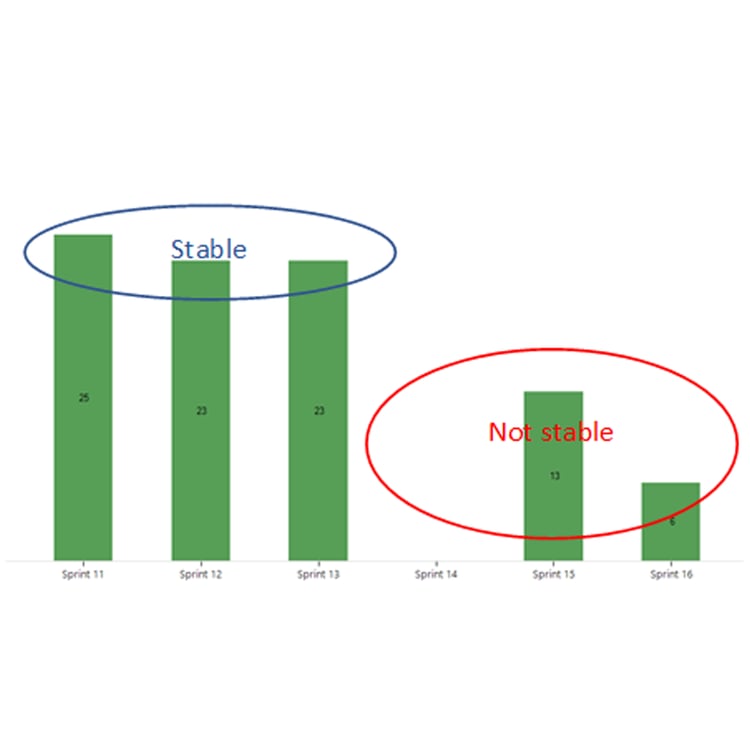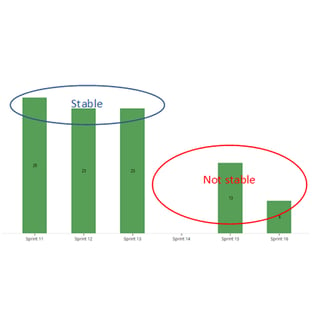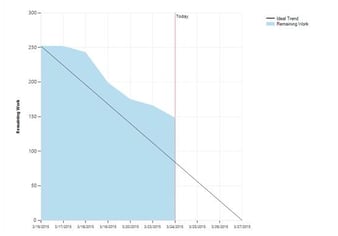
 Metrics are vital to a team. They give us a starting point, just like choosing “my location” on your GPS. Then metrics tell us where we are headed. They help us know whether our team is winning at continuous improvement. They tell us how our journey is going, and where we might be off course.
Metrics are vital to a team. They give us a starting point, just like choosing “my location” on your GPS. Then metrics tell us where we are headed. They help us know whether our team is winning at continuous improvement. They tell us how our journey is going, and where we might be off course.
The stability of metrics demonstrates that teams are predictable and can forecast future work. Many times, it is a combination of metrics that give us the real picture though.
One measure that can demonstrate a team’s stability is velocity. A team made up of dedicated members should have a stable velocity over time, which helps them better determine how much work to commit for a given sprint. So, measuring velocity over a number of sprints is a great Scrum metric. You might think that a rising velocity is good. However, a rising velocity along with rising escaped metrics tells us we haven’t reliably sped up at all. In fact, if escaped defects are rising, we need to fix something else in our process. We may need to slow back down. In contrast, a rising velocity and a decreasing or stable number of escaped defects would be a good team goal.
Another metric for a Scrum team is Committed vs Delivered %. Rather than just focusing on velocity, add a measure of Committed vs Delivered for velocity to see how your team is doing at being predictable. Teams that frequently have a low percentage of Committed to Delivered are committing to too much work in the sprint. If this is happening to your team, it is time to figure out why. Sometimes, we will know exactly what has impacted our metrics, while other times we may need to have a retrospective to discuss why. Escaped defects are important to consider, as a high percent Committed to Delivered is good, lots of rework is not.
 While Velocity and Committed vs Delivered % are end-of-sprint metrics, throughout the sprint, a team’s burndown gives us a view into progress during the sprint. It’s important to look at a team’s burndown every day to assess whether the team is likely to complete all the work they committed to. Burn-down gives us the point-in-time view of the work to be completed within the sprint. If the remaining work is far above the ideal burndown line, we may need to have a conversation with the Product Owner about stories that won’t be completed. On the other hand, if the burndown is far below the ideal line, we may be able to bring another story into the sprint.
While Velocity and Committed vs Delivered % are end-of-sprint metrics, throughout the sprint, a team’s burndown gives us a view into progress during the sprint. It’s important to look at a team’s burndown every day to assess whether the team is likely to complete all the work they committed to. Burn-down gives us the point-in-time view of the work to be completed within the sprint. If the remaining work is far above the ideal burndown line, we may need to have a conversation with the Product Owner about stories that won’t be completed. On the other hand, if the burndown is far below the ideal line, we may be able to bring another story into the sprint.
Some teams go a step further and measure Cycle Time for stories. Cycle Time starts when a team member starts work on the story and continues until the story is moved all the way to the team’s done column. Cycle time can help us determine if we are right-sizing our stories. For Scrum, stories are right-sized to just a couple of days of work or less. If Cycle Time for stories is extending well past a couple of days, you may need to try and break your work down into smaller pieces.
Using a combination of metrics and charts for a Scrum team can help the Scrum team spot problems and see if their experiments are working. These internal team metrics are just the start and give an even fuller picture when customer outcome metrics are added, but that is a topic for another post. Do not let your team meander along. Get them metrics to see where they are and where they are heading.
More from the blog
View All Blog PostsSubscribe to Our Blog
Fill out your email address to receive notifications about new blog posts from CC Pace!

